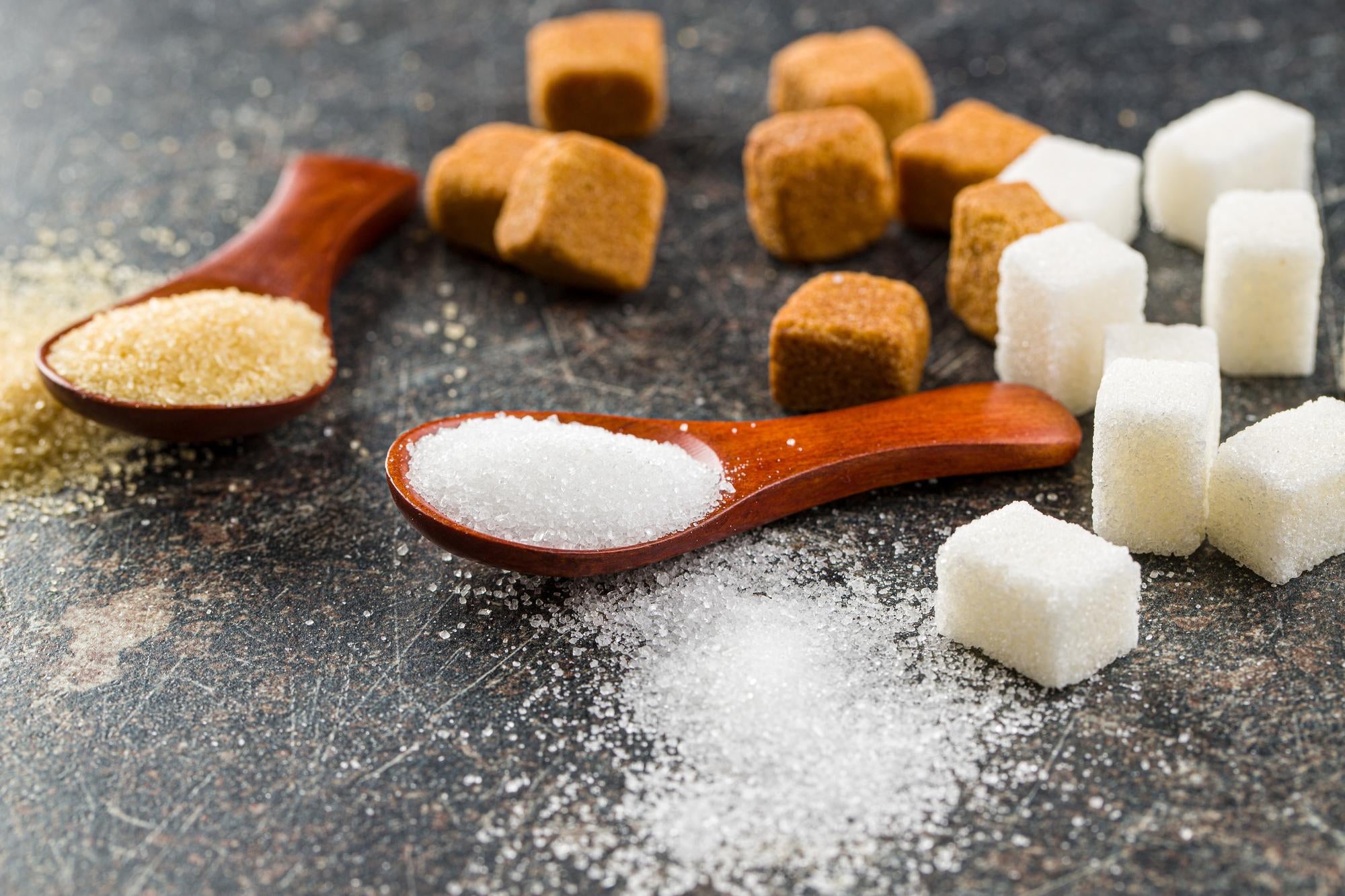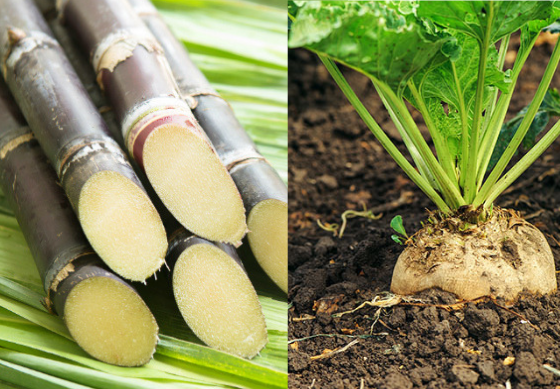Beet Sugar vs Cane Sugar: Which One Is Better for Skin Health?
Wiki Article
Beet Sugar vs. Cane Sugar: Key Distinctions You Should Know
The distinction in between beet sugar and cane sugar extends beyond their comparable chemical structures; it includes their beginnings, manufacturing methods, and potential health effects. While both kinds of sugar work as common sweeteners, their divergent backgrounds-- beet sugar emerging in 19th century Europe and cane sugar tracing back to ancient Southeast Asia-- established the phase for a deeper exploration of their manufacturing processes and dietary accounts. Comprehending these differences may influence customer choices in a market progressively concentrated on wellness and sustainability. What subtleties might further inform your decisions on these sugar?Beginnings of Beet Sugar
Although beet sugar has come to be a substantial player in the worldwide sugar market, its origins can be mapped back to the very early 19th century when European scientists began discovering alternative resources of sugar. The zero hour happened in 1801 when German chemist Andreas Marggraf identified sugar in the white beet, a discovery that laid the groundwork for succeeding study and commercial applications.The process of refining beet sugar was more progressed by his pupil, Franz Karl Achard, that established the initial beet sugar factory in Prussia in 1806. This innovation accompanied the Napoleonic Wars, throughout which profession disturbances resulted in an enhanced demand for residential sugar production in Europe. beet sugar vs cane sugar. Therefore, beet sugar got grip, especially in nations like France and Germany

Beginnings of Cane Sugar
Cane sugar, stemmed from the sugarcane plant, has a rich background that dates back countless years, primarily in exotic regions where the plant flourishes. The earliest evidence of sugarcane growing can be mapped to New Guinea and Southeast Asia around 8,000 BCE. From these beginnings, understanding of sugarcane infect India, where it was very first refined into crystallized sugar by the fifth century CE.
As trade paths created, sugarcane got to Persia, the Mediterranean, and ultimately Europe, where it was at first considered a deluxe item. The growth of sugar manufacturing happened throughout the Islamic Golden Age, which helped with the transfer of farming strategies and technologies. By the 15th century, the demand for sugar rose, prompting European countries to establish ranches in the Caribbean and South America.
This change not only transformed the farming landscape of these regions however likewise had significant socio-economic ramifications, including the reliance on confined labor. Cane sugar, when an unusual commodity, became a staple in diets worldwide, laying the foundation for the global sugar sector we recognize today. Comprehending its origins is critical for valuing cane sugar's effect on culinary practices and economic climates.
Production Processes
The manufacturing processes for both beet sugar and cane sugar entail a number of vital steps that change raw materials into the crystalline sweeteners commonly utilized today. For beet sugar, the process starts with harvesting sugar beetss, which are after that washed and cut into thin cossettes. These cossettes are subjected to hot water removal, enabling the sugar to dissolve.In comparison, cane sugar production starts with the harvesting of sugarcane, which is crushed to remove the juice. This juice is additionally cleansed utilizing lime and heat. Following filtration, the juice is evaporated to develop a syrup, which is after that taken shape. The sugar crystals are centrifuged to divide them from the remaining syrup, understood as molasses, and consequently dried. While both processes share resemblances, the resource material and certain approaches lead to unique attributes for beet and cane sugars, affecting the preferences of customers and makers alike.
Nutritional Contrast
When contrasting the nutritional profiles of beet sugar and cane sugar, it is important to acknowledge that both sugar are primarily composed of sucrose, bring about comparable power material and caloric values (beet sugar vs cane sugar). Both kinds of sugar commonly have regarding 4 calories per gram, making them equal in regards to energy arrangementIn addition to sucrose, both beet and cane sugars contain trace amounts of minerals and vitamins; nevertheless, these amounts are negligible and do not significantly add to daily dietary demands. Both might contain minute degrees of potassium, calcium, and magnesium, however these are not present in sufficient quantities to provide any kind of considerable health benefits.
Moreover, the lack of fiber in both kinds of sugar highlights their role as pure sweeteners instead of resources of nutrition. beet sugar vs cane sugar. While they might offer a fast source of energy, their lack of essential nutrients highlights the relevance of moderation in intake
Ultimately, from a simply nutritional point company website ofview, beet sugar and cane sugar are practically identical, making the choice between both mainly based on aspects such as taste choice, accessibility, and ecological factors to consider.
Wellness Ramifications
While beet sugar and cane sugar share comparable dietary profiles, their health implications require factor to consider past mere structure. Both sugars are mainly composed of sucrose, which can lead to similar metabolic impacts; too much usage can add to obesity, diabetes mellitus, and cardiovascular conditions. The resource and manufacturing of these sugars may influence their total health influence.Beet sugar is frequently created making use of controversial chemicals, such as phosphoric acid, which may leave trace deposits. On the other hand, cane sugar undergoes a much more standard refining process, which often tends to be much less chemical-intensive. The presence of these deposits in beet sugar can raise issues for sensitive populaces or those looking for to minimize chemical direct exposure.

Additionally, the cultivation methods of sugar beetss and sugar cane may differ, with the previous usually including even more intensive farming methods that can affect dirt health and biodiversity. This farming context might affect the broader health effects of sugar intake on a population level.
Ultimately, while both beet and cane sugars offer comparable functions in the diet, customers should take into consideration the nuances of manufacturing and sourcing when making informed selections about their sugar consumption.
Final Thought

While both kinds of sugar offer as usual sweeteners, their divergent backgrounds-- beet sugar arising in 19th century Europe and cane sugar tracing back to old Southeast Asia-- established the stage for a much deeper exploration of their manufacturing and nutritional accounts.The procedure of refining beet check my source sugar was more advanced by his student, Franz Karl Achard, that established the first beet sugar factory in Prussia in 1806.The manufacturing for both beet sugar and cane sugar entail numerous essential steps that transform raw materials into the crystalline sweeteners generally utilized today. For beet sugar, the procedure begins with gathering sugar beetss, which are then cleaned and cut into slim cossettes. The removal processes additionally differentiate the 2, with beet sugar making use of warm water extraction and cane sugar entailing crushing.
Report this wiki page